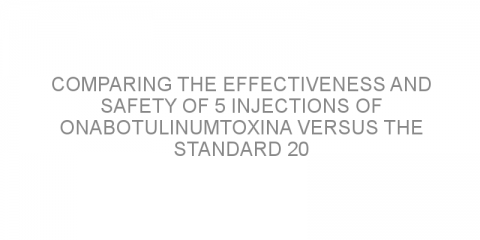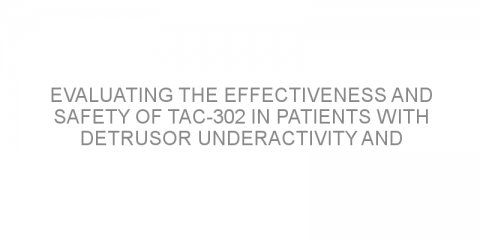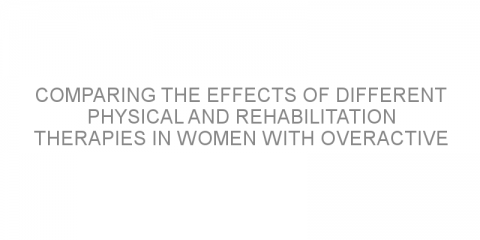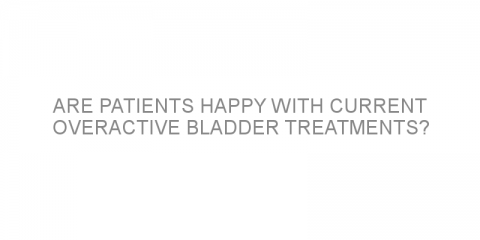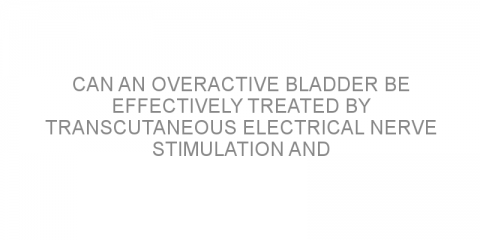In a nutshell This study compared the effectiveness and safety of 5 injections of onabotulinumtoxinA (OBTA; Botox) versus the standard 20 injections for the treatment of patients with overactive bladder (OAB). The study found that a reduced technique of 5 injections of OBTA was safe and as effective as the standard technique of 20 injections for the...
Read MoreOveractive bladder Posts on Medivizor
Evaluating the effectiveness and safety of mirabegron and solifenacin combination in patients with double-J stent related overactive bladder symptoms.
In a nutshell This study evaluated the effectiveness and safety of mirabegron (Myrbetriq) and solifenacin (Vesicare) combination in patients with double-J stent-related overactive bladder (OAB) symptoms. The study found that mirabegron and solifenacin combination significantly improved urinary symptoms, OAB symptoms, and the quality of life with...
Read MoreEvaluating the effectiveness and safety of TAC-302 in patients with detrusor underactivity and overactive bladder.
In a nutshell This study evaluated the effectiveness and safety of TAC-302 in patients with detrusor underactivity (DU) and overactive bladder (OAB). The study found that TAC-302 may benefit patients with DU. Some background Overactive bladder (OAB) occurs when the bladder muscle is too active. Instead of staying at rest as urine fills the bladder,...
Read MoreComparing the effects of different physical and rehabilitation therapies in women with overactive bladder
In a nutshell The study compared the effects of different physical and rehabilitation therapies in women with overactive bladder (OAB). The study found that percutaneous tibial nerve stimulation (PTNS) alone, a combination of bladder training (BT) with electrical stimulation (ES), and a combination of BT and ES with biofeedback (BF) were effective for...
Read MoreComparing tibial nerve stimulation and antimuscarinic agents for the treatment of overactive bladder syndrome.
In a nutshell This study compared the effectiveness and safety of tibial nerve stimulation (TNS) versus antimuscarinic agents for the treatment of patients with overactive bladder (OAB). The study found that TNS was safer and as effective as antimuscarinic agents for the treatment of OAB. Some background Overactive bladder (OAB) occurs when the...
Read MoreDoes sacral neuromodulation with the InterStim device improve symptoms of overactive bladder?
In a nutshell This study looked at the use of sacral neuromodulation (SNM) with the InterStim device in patients with overactive bladder (OAB). It found that SNM improved the symptoms of OAB over 3 years. Some background OAB is a condition in which the bladder contracts involuntarily leading to a sudden, urgent need to urinate....
Read MoreAre patients happy with current overactive bladder treatments?
In a nutshell This study looked at the treatments for overactive bladder (OAB) and how satisfied patients were with current options. It found patients had reduced quality of life due to OAB symptoms and that most patients found non-invasive stimulation treatment comfortable and effective. Some background Overactive bladder (OAB)...
Read MoreEvaluating onabotulinumtoxinA effectiveness in overactive bladder according to sex
In a nutshell This study looked at the effectiveness of onabotulinumtoxinA (OBTA; Botox) injections for the treatment of overactive bladder (OAB) according to sex. It found that OBTA improved symptoms of OAB in women and men with lower levels of PSA (a protein made by the prostate that increases when the prostate is enlarged),...
Read MoreIs vibegron safe and effective in older patients?
In a nutshell This study looked at the use of vibegron (Gemtesa) for overactive bladder (OAB) in older patients. It found that vibegron was equally effective in younger and older patients and did not have significant impact on heart disease in older patients. Some background OAB is a condition that affects mainly older...
Read MoreCan an overactive bladder be effectively treated by transcutaneous electrical nerve stimulation and solifenacin succinate?
In a nutshell This study compared the effectiveness of transcutaneous electrical nerve stimulation (TENS) combined with solifenacin succinate (SS; Vesicare) to SS alone, in patients with overactive bladder (OAB). The data showed that TENS in combination with SS was more effective than SS on its own in these patients. Some...
Read MoreSacral neuromodulation improves clinical outcomes in patients that failed first-line Botulinum toxin treatment for overactive bladder
In a nutshell This study investigated the effectiveness of sacral neuromodulation (SNM) in patients with overactive bladder (OAB) that failed previous Botulinum toxin A (Botox; BTA) treatment. Researchers suggested that SNM is a good method in patients who failed first-line treatment. Some background OAB causes a sudden urge to urinate that is...
Read MoreA comparison of the effects on quality of life of percutaneous and transcutaneous tibial nerve stimulation for overactive bladder.
In a nutshell This study aimed to compare the effects on quality of life (QOL) of percutaneous and transcutaneous tibial nerve stimulation for the treatment of overactive bladder (OAB). The main finding was that both procedures were similarly effective at treating the symptoms of OAB. Some background OAB is characterized by symptoms such as...
Read More
